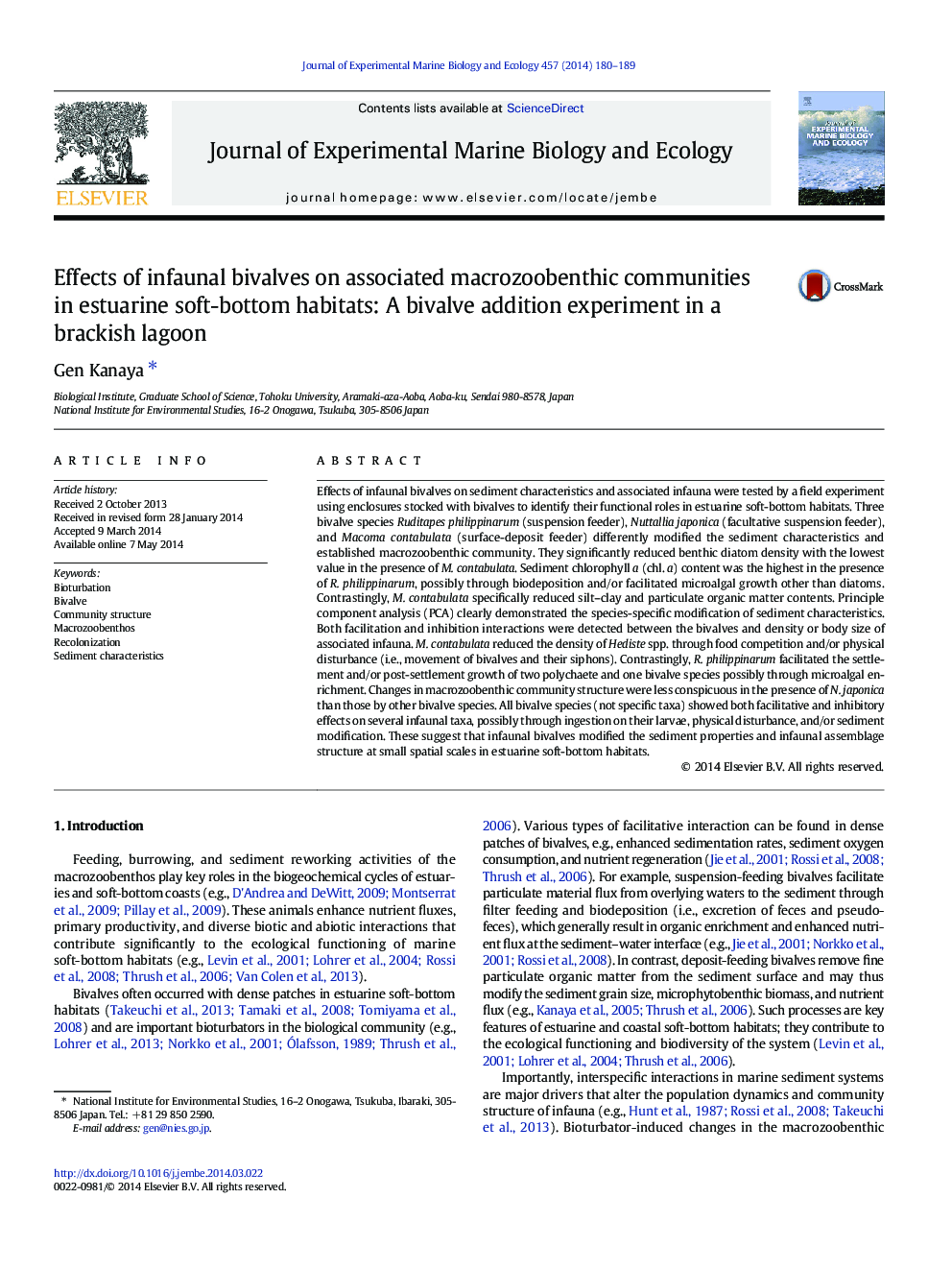| Article ID | Journal | Published Year | Pages | File Type |
|---|---|---|---|---|
| 6304217 | Journal of Experimental Marine Biology and Ecology | 2014 | 10 Pages |
Abstract
Effects of infaunal bivalves on sediment characteristics and associated infauna were tested by a field experiment using enclosures stocked with bivalves to identify their functional roles in estuarine soft-bottom habitats. Three bivalve species Ruditapes philippinarum (suspension feeder), Nuttallia japonica (facultative suspension feeder), and Macoma contabulata (surface-deposit feeder) differently modified the sediment characteristics and established macrozoobenthic community. They significantly reduced benthic diatom density with the lowest value in the presence of M. contabulata. Sediment chlorophyll a (chl. a) content was the highest in the presence of R. philippinarum, possibly through biodeposition and/or facilitated microalgal growth other than diatoms. Contrastingly, M. contabulata specifically reduced silt-clay and particulate organic matter contents. Principle component analysis (PCA) clearly demonstrated the species-specific modification of sediment characteristics. Both facilitation and inhibition interactions were detected between the bivalves and density or body size of associated infauna. M. contabulata reduced the density of Hediste spp. through food competition and/or physical disturbance (i.e., movement of bivalves and their siphons). Contrastingly, R. philippinarum facilitated the settlement and/or post-settlement growth of two polychaete and one bivalve species possibly through microalgal enrichment. Changes in macrozoobenthic community structure were less conspicuous in the presence of N. japonica than those by other bivalve species. All bivalve species (not specific taxa) showed both facilitative and inhibitory effects on several infaunal taxa, possibly through ingestion on their larvae, physical disturbance, and/or sediment modification. These suggest that infaunal bivalves modified the sediment properties and infaunal assemblage structure at small spatial scales in estuarine soft-bottom habitats.
Keywords
Related Topics
Life Sciences
Agricultural and Biological Sciences
Aquatic Science
Authors
Gen Kanaya,
